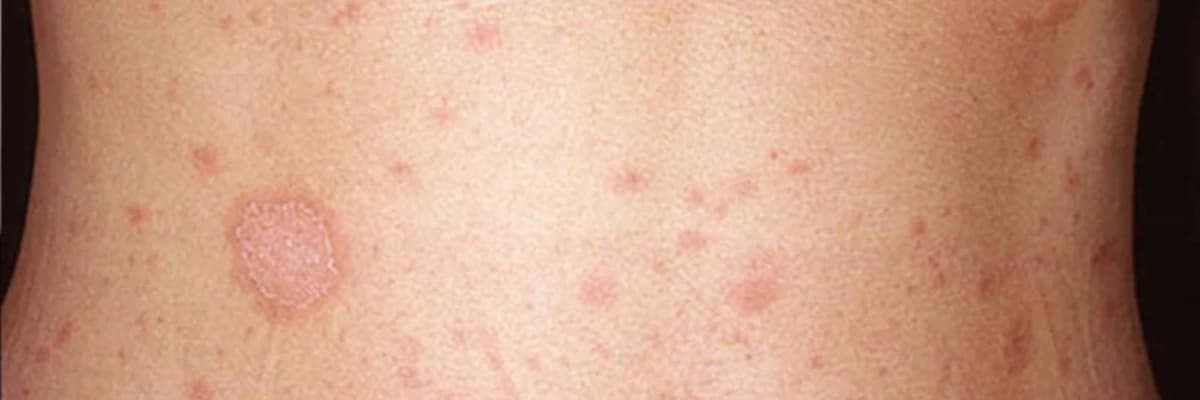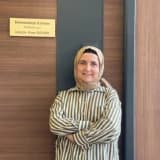Pityriasis rosea: a natural history of pediatric cases in the Central Anatolia Region of Turkey

PR is a common acute exanthema. Limited data are available concerning its prevalence in children. Gül et al. determined a prevalence of PR of 1.27% in a study involving the pediatric age group . The causes of PR are unclear, although the use of certain medications, stress, pregnancy, and infection have all been implicated. Of our study group, 32.6% had a prior history of URTI. Peak incidence occurred in winter and fall, a finding that is supported by the available literature. We postulate that a decrease in ambient temperature Table. Clinical and epidemiological features of the patients with pityriasis rosea. Characteristics n (%) Sex Female Male Season of onset Winter Fall Spring Summer Pruritus Signs Herald patch Type of lesion Papulosquamous Papular Papulovesicular Distribution of lesions Central Diffuse Peripheral Inverse Duration Resolution 4 weeks Lost to follow-up Recurrence Treatment Oral antihistamines* Topical corticosteroids* Oral antibiotics* Systemic steroids. *Used alone or in combination with other treatments. 1742 ÇÖLGEÇEN et al. / Turk J Med Sci suppresses cellular immunity, promoting disease among vulnerable individuals. Pruritus has been reported in 25% of adult patients and 69%–90% of pediatric PR patients, and pruritus was identified in 74% of our cases. The incidence of pruritus in our study was higher than the typical rate reported for adult patients, but comparable to previous reports in pediatric populations. In addition, 78.3% of our patients exhibited a herald patch, which is compatible with the previously reported range of 12%–94%. Our rates for household concurrence, 4.3% (in 2 patients), and recurrence, 2.2%, were both within previously cited ranges of 1%–4.6% and 1.4%–2.8%, respectively. Secondary lesions in PR are very similar to the herald patch, although they are always smaller. Gigantean (larger and fewer lesions), pustular, purpuric, and vesicular PR cases are rare. The trunk, abdomen, and neck are the most common sites, while the extremities and face are rarely involved . In our pediatric patients with PR, the classical papulosquamous type located on the trunk (93.5%) was the most common manifestation. Active lesions resolved within 2 weeks in half of our cases and within 4 weeks in 78.3%, a rate similar to that seen in African-American children. Seventy-four percent of our patients had pruritus. Scratching of lesions can lead to secondary infection and scarring. It seems reasonable to offer patients relief from their pruritus and to prevent nonpigmentary sequelae through the application of systemic antihistamines, mild topical steroids, or both. Oral antibiotics were prescribed to 5 patients with possible bacterial infection, and systemic steroid therapy was provided for 2 patients not responding to systemic antihistamines and topical steroids. In contrast to our study conducted in a Turkish pediatric population, PR involving the scalp and face in African-American children is often extensive and papular and leaves residual pigmentary changes in the majority of patients. This suggests that genetic factors are involved in the etiology and course of PR. In conclusion, the course of PR is similar in Turkish children and adults. We observed a higher incidence of disease during rainy and snowy months. URTI preceded the emergence of rash in 32.6% of our patients. Another significant finding was the high prevalence of pruritus, which resolved rapidly in our PR cases. Further studies with larger patient numbers are now needed to compare PR symptoms in different age cohorts and ethnic groups.
